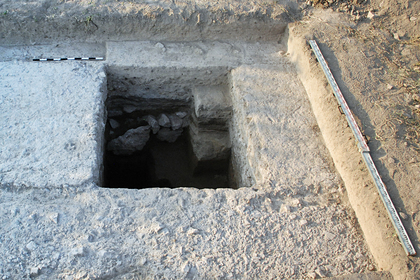Archaeologists from Armenia and Germany have discovered the easternmost aqueduct of the Roman Empire  arched aqueduct – the most eastern known. An article dedicated to the find by scientists was published in the journal Archäologischer Anzeiger.
arched aqueduct – the most eastern known. An article dedicated to the find by scientists was published in the journal Archäologischer Anzeiger.
First, archaeologists studied the area of the alleged excavation using the geomagnetic method. The compiled anomaly map made it possible to clearly distinguish the dotted line. The three-dimensional model obtained using sounding helped to correctly identify the locations for drilling. “We used satellite images and infrared images from a drone to visualize the location of the aqueduct columns,” says one of the researchers, head of the Department of Archeology of Ancient Armenia at the Institute of Archeology and Ethnography of the National Academy of Sciences of the Republic of Armenia Mkrtich Zardaryan. After analyzing the possible routes of water to the destination, the researchers reproduced the course of the aqueduct.
The study of mortar – a masonry mixture – showed that it was composed according to a traditional Roman recipe. Analysis of soil samples allowed the construction of the aqueduct to be dated between 60 and 460 years. According to researchers, it was built during the reign of Emperor Trajan. “The massive foundations are evidence of the unfinished aqueduct bridge built by the Roman army between 114 and 117. At that time it was planned that Artaxata (the Hellenized name of Artashat – approx. “Lenta.ru” ) would become the capital of the Roman province of Armenia, ”notes one of the authors of the work, Professor of the University of Munster Achim Lichtenberger. After Trajan's death, during which the Roman Empire reached its maximum size, in 117 AD, his successor Adrian left the province of Armenia before the aqueduct was completed.